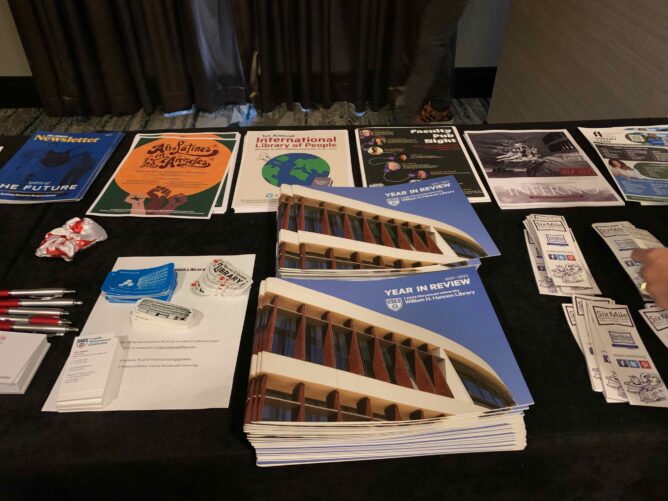My hardware is Millennial. My software is Gen X, but there are Gen Z apps running in the background.
Month: December 2023
What I’m reading 2023-12-12
The end of the year tends to bring some of the most interesting writing. And so my tbr list of articles is already longer than Santa’s list. Here’s what I’ve enjoyed reading so far this week.
On regulating AI
“We need trustworthy AI. AI whose behavior, limitations, and training are understood. AI whose biases are understood, and corrected for. AI whose goals are understood. That won’t secretly betray your trust to someone else. The market will not provide this on its own.”
“AI and trust” by Bruce Schneier
On web analytics
“Lots of likes is an okay-ish signal. Lots of comments is a clearer signal. A small handful of comments or private replies from people saying they’ve never felt so seen or understood by a piece of writing—that’s the kind of thing I’m trying to discern and quantify here.”
“Measuring what matters” by Rob Hardy
On privacy and college students
“Few institutions collect as much data about the people inside of them as colleges and universities do. Residential campuses, in particular, mean students not only interact with their schools for academics, but for housing, home internet, dining, health care, fitness, and socialization. Still, whether living on campus or off, taking classes in person or remotely, students simply cannot opt out of most data collection and still pursue a degree.”
“He wanted privacy. His college gave him none” by Tara García Mathewson
On libraries and platforms
“After all, we’re the libraries. We have plenty of experience with corporate entities that don’t reflect our values. We deal with the journal publishers who practice a business model that hoards the world’s knowledge and maximizes profit from the research that our university’s scholars conduct. When it comes to the academic publishing system, institutions of higher learning have made a deal with the devil, and we, the libraries, are the campus units who pay the bill.”
“Why we’re dropping Basecamp” by Duke University Libraries
On social media trends
“In 2024, strategic organizations will push back against unjustified expectations to be on every platform. They’ll unlock their top-performing channels based on ROI, and focus their attention on those—and only those. If they’re really confident (and brave), they might even abandon one or two altogether.”
Hootsuite’s Social Media Trends 2024
On attention
“The platforms that control search were conceived in sin. Their business model auctions off our most precious and limited cognitive resource: attention. […] Critical ignoring is the ability to choose what to ignore and where to invest one’s limited attentional capacities. Critical ignoring is more than just not paying attention – it’s about practising mindful and healthy habits in the face of information overabundance.”
“When critical thinking isn’t enough: to beat information overload, we need to learn ‘critical ignoring’” by Hertwig, Kozyreva, Wineburg, and Lewandowsky
We are not naive
After all, we’re the libraries. We have plenty of experience with corporate entities that don’t reflect our values. We deal with the journal publishers who practice a business model that hoards the world’s knowledge and maximizes profit from the research that our university’s scholars conduct. When it comes to the academic publishing system, institutions of higher learning have made a deal with the devil, and we, the libraries, are the campus units who pay the bill. We do it every year, often facing steep price increases with flat budgets.
“Why We’re Dropping Basecamp” by Duke University Libraries
Outreach by hook or by crook

I’ve been thinking about something I heard at the LMCC 2023 conference: “Marketing should drive usage which in turn creates impact” (source: Cordelia Anderson).
I often forget that middle piece when developing outreach strategies for my library. At the risk of oversimplifying, I’m extending Anderson’s use of the word “marketing” to the entire outreach enterprise. For sure, there are programs and initiatives the directly impact usage: a recent campaign to promote our streaming video collection, the curation of recommended reading lists, and the annual open house. However, there are some programs that skip right over usage to create the end-goal of impact: our storytelling programming, our faculty speaker series, and our haunted library. These latter programs directly impact our students by creating a sense of belonging and bringing together our community through the celebration of its creative works, but that impact isn’t achieved via the library’s services and collections.
I would consider creating impact via the library’s services and collections to be a traditional approach to library outreach, one often taken by teams where outreach work is embedded within reference and instruction departments. This is where you find info lit workshops, custom bibliographies, instructional handouts, e-resources campaigns, video tutorials, etc. For teams like the one I manage (we are our own “outreach and engagement” department separate from our colleagues who focus on teaching and collections building) we go straight to the impact: feel good events, mental health programs, community building, productivity support, and service learning opportunities. The motivations for our work come unfiltered straight from either the library’s broader mission or the university’s strategic goals.
I’m not suggesting one type of outreach is better than the other. Having both is important, but finding the optimal balance between the two is a conversation for every individual, team, library, and organization to determine on their own terms.